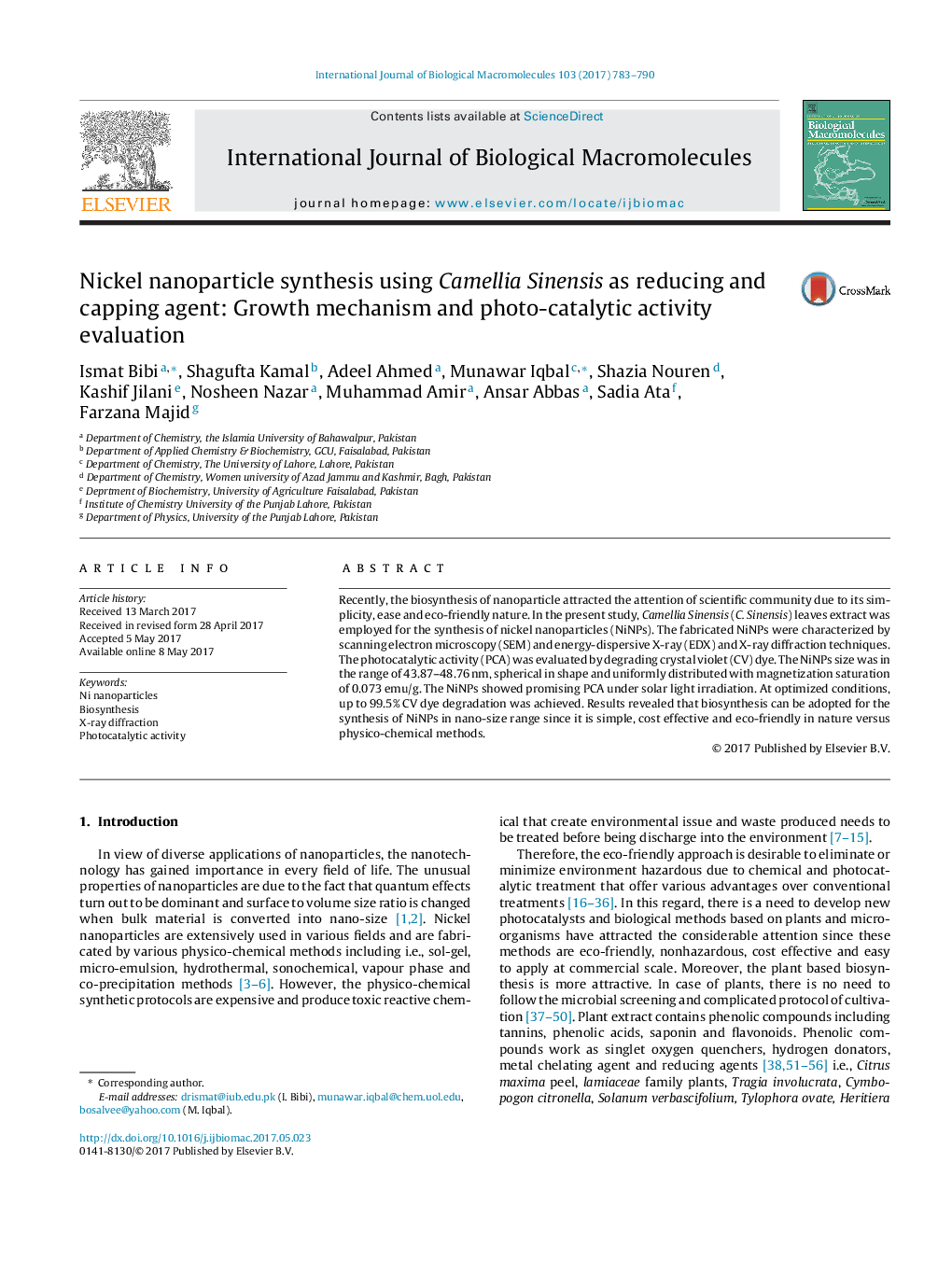| کد مقاله | کد نشریه | سال انتشار | مقاله انگلیسی | نسخه تمام متن |
|---|---|---|---|---|
| 5511912 | 1540215 | 2017 | 8 صفحه PDF | دانلود رایگان |

- C. Sinensis leaf extract was undergone for Ni nanoparticle synthesis.
- Particles were characterized by SEM, EDX and XRD and VSM techniques.
- The NPs size was in the range of 43.87-48.76Â nm.
- NiNPs shows promising photo-catalytic activity.
Recently, the biosynthesis of nanoparticle attracted the attention of scientific community due to its simplicity, ease and eco-friendly nature. In the present study, Camellia Sinensis (C. Sinensis) leaves extract was employed for the synthesis of nickel nanoparticles (NiNPs). The fabricated NiNPs were characterized by scanning electron microscopy (SEM) and energy-dispersive X-ray (EDX) and X-ray diffraction techniques. The photocatalytic activity (PCA) was evaluated by degrading crystal violet (CV) dye. The NiNPs size was in the range of 43.87-48.76Â nm, spherical in shape and uniformly distributed with magnetization saturation of 0.073 emu/g. The NiNPs showed promising PCA under solar light irradiation. At optimized conditions, up to 99.5% CV dye degradation was achieved. Results revealed that biosynthesis can be adopted for the synthesis of NiNPs in nano-size range since it is simple, cost effective and eco-friendly in nature versus physico-chemical methods.
132
Journal: International Journal of Biological Macromolecules - Volume 103, October 2017, Pages 783-790